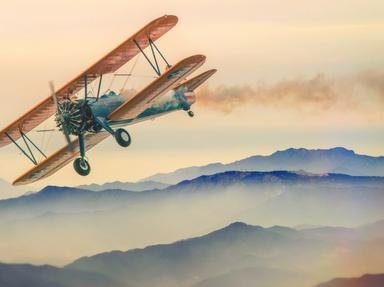Quiz Answer Key and Fun Facts
1. On December 17th 1903, history was made: the Wright brothers made the first successful powered flight. How many flights did the Wright brothers make on that day?
2. The historic flight of the Wright brothers took place at Kill Devil Hills, Kitty Hawk, North Carolina. But why on earth did they choose that place to test their plane?
3. So the Wright brothers were the first to make a successful manned flight. But they didn't go up together! Which of the brothers was actually the first man on a successful flight?
4. The first American to fly after the Wright Brothers was a man named Glenn Curtiss. On the 4th of July, 1908, his heavier-than-air aeroplane won the Scientific American Trophy when he flew it 5,080 feet (1,550 meters). What was the name of his aeroplane?
5. In Europe, the first sustained manned, powered flight was made by Alberto Santos-Dumont. He made his flights in France, but from which country did he truly hail?
6. What new aerial feat did Frenchman Louis Bleriot accomplish in 1909?
7. Charles S. Rolls was the first person to cross the English Channel on a round trip, flying from England to France and back without landing.
8. The first four-engine aeroplane to fly was named "Sikorsky Bolshoi"--but which country, known for its borscht and Matryoshka dolls, was it built in?
9. The first US Navy aeroplane was the Curtiss A-1 Hydroplane. In what year was the aeroplane introduced to the US Navy?
10. The name Charles Lindbergh is very familiar, but exactly what aerial feat did he accomplish to make him famous?
Source: Author
lordprescott
This quiz was reviewed by FunTrivia editor
trident before going online.
Any errors found in FunTrivia content are routinely corrected through our feedback system.
